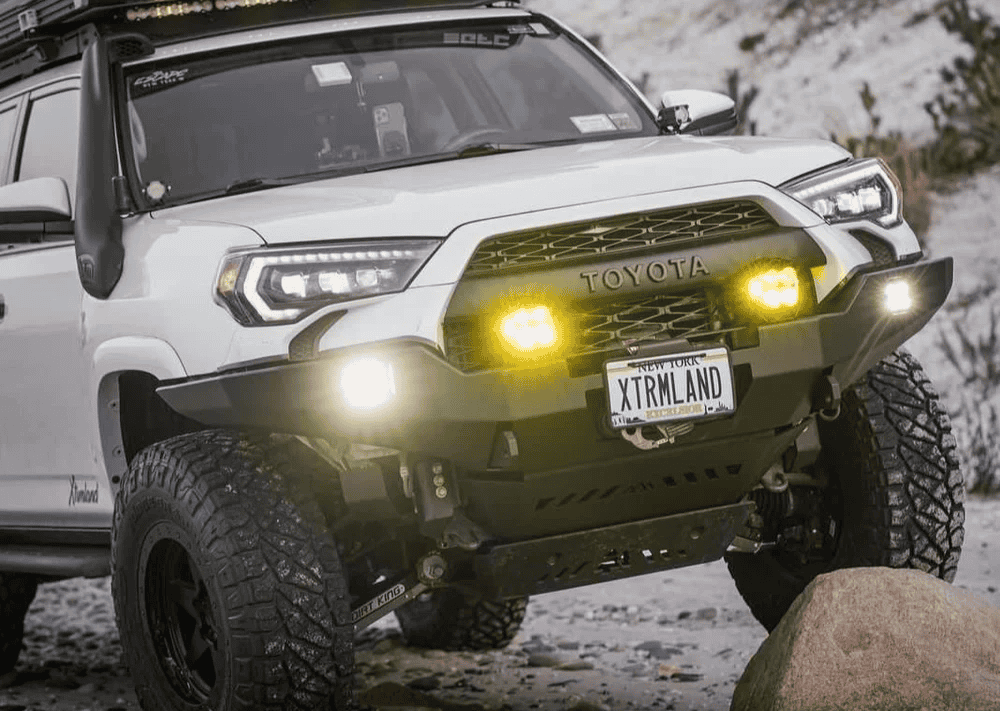Overland Vehicles

The Chevy Trail Boss arrives with a factory lift, a two speed transfer case, and a locking rear differential, which makes it a solid starting point for backcountry travel. To convert it into an overland rig, think systems rather than single parts. Your goal is dependable traction, protected underbody components, and enough range in fuel, water, and power to stay out longer without drama.
Begin with tires. A quality all terrain in the 33 to 35 inch range improves grip, puncture resistance, and sidewall strength. Larger tires add weight and change effective gearing, so plan for recalibration and potential axle ratio changes if you go big. Reinforce the spare setup to carry a full size spare, and consider a second spare for extended desert or rocky routes.
Protection is next. Skid plates for the front differential, transfer case, and fuel tank reduce trail damage. Rock sliders protect the cab and act as high lift jacking points. Strong front and rear recovery points are mandatory. A front bumper with a rated winch mount plus a 9 to 12 thousand pound winch provides a self recovery option when travel partners are not nearby.
Chassis and drivetrain set the limits for everything you add. Know your GVWR and payload sticker. Many Trail Boss trims have payloads that can drop fast once you add steel bumpers, a winch, water, and a drawer system. Keep a running weight spreadsheet to prevent overloading. Balance weight between axles and aim for a neutral stance with the vehicle fully loaded.
Suspension tuning is about control, not just ride height. Quality monotube or remote reservoir shocks manage heat on washboard. Add rear springs or helper systems sized to your steady loaded weight, not the empty curb weight. Extended travel upper control arms help alignment at lifted heights and improve droop travel. After every change, get a proper alignment and check bump stop engagement to protect joints and shafts.
Gearing and cooling matter when tire diameter increases or routes include mountain passes. If you step to a heavier tire, evaluate axle ratios to restore drivability and transmission behavior. Upgrade the cooling package and transmission heat management if you tow a small off road trailer or carry heavy loads in hot climates.
Electrical independence brings comfort and safety. A dual battery or a dedicated lithium house battery with a DC to DC charger ensures clean power for a fridge, lights, and comms. Add 200 to 400 watts of solar if you often camp in sunny regions, and choose an inverter sized to your true loads rather than guesswork. Secure wiring in abrasion resistant loom and fuse every circuit correctly.
Water planning is simple math. Most travelers use three to four liters per person per day in cool weather, more in heat. A 20 to 40 gallon capacity, paired with filtration or purification, keeps trips flexible. Mount tanks low and central for handling. Quick disconnects and a simple galley module make cooking fast without turning the bed into a workshop every night.
Storage is about access. A canopy or bed rack with modular side panels can hold tools, recovery gear, and a fridge on a slide. Drawer systems prevent gear yard sales on rough roads. Keep heavy items forward of the rear axle and down low. Reserve roof load for light, bulky items like camp chairs and bedding to avoid body roll and high center of gravity moments.
For a deeper view of build pathways and components, explore Explore overland rigs and compare common packages and use cases.
Budget with the total system in mind. Protection, suspension, power, water, storage, navigation, and spares quickly add up. Spend first on reliability and safety, then comfort. Trail testing near home is priceless. Shake down the rig with a full load and adjust tire pressures, shock settings, and cargo tie down points after the first outing.
Compliance protects your investment. Verify that auxiliary lighting is aimed and legal on road. Make sure bumper and tire changes do not block sensors or airbag systems. Keep emissions systems intact. Inform your insurer of modifications so coverage matches the real build. Document torque specs, fluid intervals, and spare part lists for remote trips.
If you want expert help translating these principles into a balanced build, see Custom overland upfit for end to end planning and installation support.
A capable overland rig is more than a pile of parts. OZK Customs designs and installs complete systems that work together: armor, suspension, lighting, onboard power, water, storage, and communications. Our team builds full custom rigs and partial upfits, then walks you through every feature before handoff at our Fayetteville shop and Adventure Point lounge.
Curious how we think and build? Start with Why choose OZK Customs for our approach and standards, or head to Explore overland rigs to see pathways that match your routes and payload. When you are ready, map your Trail Boss plan through Custom overland upfit and we will turn your checklist into a trail ready truck.
At OZK Customs, we build recreational adventure vans, overland rigs, and towable solutions that fit how you travel. We offer complete custom builds, partial upfits, and specialized fabrication. Tell us what you need on the trail, and we will engineer the rest.
Ready to transform your Trail Boss into a dialed expedition platform? OZK Customs designs and builds complete overland rigs, from protection and suspension to power systems, water, and storage. Tell us how you travel, and we will engineer a build that fits your routes, your payload, and your timeline. Start your build plan now.
ADDRESS:
6159 E Huntsville Rd, Fayetteville, AR 72701
PHONE:
(479) 326-9200
EMAIL:
info@ozkvans.com